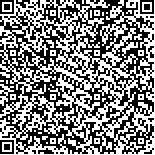| 摘要: |
| [摘要] 目的 探讨脑脊液乳酸(CSF-LA)水平测定在婴幼儿细菌性肺炎病情变化中的应用及合并神经系统感染的关系。方法 选取2015-01~2018-01该院收治的89例2个月~5岁细菌性肺炎患儿为研究对象,依照婴幼儿细菌性肺炎诊断标准及病情严重程度分为普通肺炎组26例和重症肺炎组63例。其中重症肺炎组又分为细菌性脑膜炎(BM)组26例及非BM组37例。另外选取2个月~5岁非细菌感染无热惊厥患儿29例作为对照组。测定所有患儿的CSF-LA水平,比较不同组别患儿CSF-LA的差异。结果 重症细菌性肺炎组CSF-LA水平显著高于普通细菌性肺炎组及对照组,差异有统计学意义(P<0.05)。重症细菌性肺炎BM组CSF-LA水平显著高于重症细菌性肺炎非BM组、普通细菌性肺炎组及对照组,差异有统计学意义(P<0.01)。结论 CSF-LA水平能间接反映婴幼儿细菌性肺炎的病情严重程度,并有助于婴幼儿细菌性肺炎合并神经系统感染的诊断。 |
| 关键词: 细菌性肺炎 脑脊液乳酸 细菌性脑膜炎 婴幼儿 |
| DOI:10.3969/j.issn.1674-3806.2018.08.04 |
| 分类号:R 725.6 |
| 基金项目:广西卫计委科研课题(编号:Z2016584) |
|
| Application of cerebrospinal fluid lactic acid levels in infants with bacterial pneumonia |
|
XU Zhi-cheng, XIE Qing-ling, LU Yuan-feng, et al.
|
|
Departmant of Pediatrics, the People′s Hospital of Guangxi Zhuang Autonomous Region, Nanning 530021, China
|
| Abstract: |
| [Abstract] Objective To investigate the relationship between the levels of cerebrospinal fluid lactic acid(CSF-LA) in infantile bacterial pneumonia and the severity of the disease and the complications of nervous system infection. Methods 89 infants with bacterial pneumonia aged from 2 months to 5 years were collected in our hospital during January 2015 and January 2018 and their clinical data were retrospectively analyzed. The patients were divided into the common pneumonia group(n=26) and severe pneumonia group(n=63). The infants with severe pneumonia were divided into the bacterial meningitis(BM) subgroup(n=26) and the non-BM subgroup(n=37). Other 29 non-infectious infants without febrile convulsions aged from 2 months to 5 years were taken as the control group(n=29). The levels of CSF-LA were detected and compared among the groups. Results The levels of CSF-LA in the severe bacterial pneumonia group were significantly higher than those in the common bacterial pneumonia group and the control group(P<0.05). The levels of CSF-LA in the BM subgroup were significantly higher than those in the non-BM subgroup, the common bacterial pneumonia group and the control group(P<0.01). Conclusion The levels of CSF-LA can indirectly reflect the severity of bacterial pneumonia in infants and contribute to the diagnosis of infantile bacterial pneumonia complicated with the infection of the nervous system. |
| Key words: Bacterial pneumonia Cerebrospinal fluid lactic acid(SCF-LA) Bacterial meningitis Infants |

